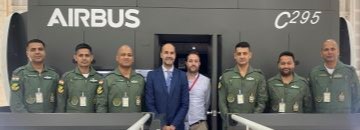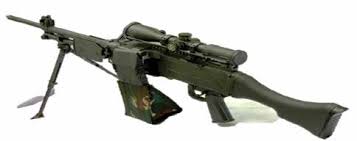The Indian Air Force (IAF) pilots have started training on the C-295 aircraft simulator in Airbus’s Spanish facility in Seville.
Earlier, on September 24, 2021 the Ministry of Defence (MoD) signed a Rs 21,935 crore contract with Airbus Defence and Space for the acquisition of 56 C-295 MW transport aircraft along with associated equipment.
Of the 56 aircraft contracted, 16 will come in fly-away condition from Spain between September 2023 and August 2025.
The remaining 40 will be manufactured here to be delivered between September 2026 and 2031 at the rate of eight aircraft per year.
A consortium led by TATA group and Airbus will manufacture 40 C-295 transport aircraft in Gujarat.
The facility will eventually cater to export of the aircraft as well as for additional orders by the Indian Air Force.
About C-295 Aircraft
It is robust and reliable but also highly versatile in terms of the number of different missions it can perform. The C295 conducts multi-role operations worldwide under all weather conditions. It is fully certified and routinely operates day and night in combat missions in all weather extremes, from desert to maritime environments, from extremely hot to extremely cold temperatures.
Key Specifications
Unit cost: 28,000,000–28,000,000 USD approx.
Crew: 2
Capacity: 73 troops / 48 paratroops / 12 stretcher intensive care medevac / 27 stretcher medevac with 4 medical attendants
Maximum payload: 7,050 kg (15,543 lb) normal
9,250 kg (20,393 lb) overload
Length: 24.46 m (80 ft 3 in)
Wingspan: 25.81 m (84 ft 8 in)
Height: 8.66 m (28 ft 5 in)
Wing area: 59 m2 (640 sq ft)
Airfoil: NACA 65-218[109]
Max takeoff weight: 21,000 kg (46,297 lb) normal
23,200 kg (51,147 lb) overload
Maximum landing weight: 20,700 kg (45,636 lb) normal
23,200 kg (51,147 lb) overload
Maximum zero-fuel weight: 18,500 kg (40,786 lb) normal
20,700 kg (45,636 lb) overload
Fuel capacity: 7,650 L (2,020 US gal; 1,680 imp gal) with optional in-flight refuelling probe
Powerplant: 2 × Pratt & Whitney Canada PW127G turboprop engines, 1,972 kW (2,644 hp) each for take-off (normal)
2,177 kW (2,919 hp) with APR
Propellers: 6-bladed Hamilton Sundstrand HS-568F-5, 3.94 m (12 ft 11 in) diameter composite propellers with auto-feathering and synchro-phasing
Performance
Cruise speed: 482 km/h (300 mph, 260 kn) at optimum altitude
Range: 1,555 km (966 mi, 840 nmi) normal payload, ISA, 45 minutes reserve at 460 m (1,509 ft)
1,277 km (793 mi; 690 nmi) max overload payload
4,587 km (2,850 mi; 2,477 nmi) normal MTOW, max fuel with 2,940 kg (6,482 lb) payload
2,148 km (1,335 mi; 1,160 nmi) overload MTOW, max fuel with 8,000 kg (17,637 lb) payload
Ferry range: 5,000 km (3,100 mi, 2,700 nmi)
Service ceiling: 4,125 m (13,533 ft) on one engine
Absolute ceiling: 9,145 m (30,003 ft)
g limits: +2.53 (normal MTOW)
+2.25 (overload MTOW)
Time to altitude: to optimum cruising altitude 12 minutes
Power/mass: 0.188 kW/kg (0.114 hp/lb) normal
0.17 kW/kg (0.10 hp/lb) overload
Take-off run: 844 m (2,769 ft) Sea level, ISA
934 m (3,064 ft) Sea level, ISA + 20
Take-off distance to 15 m (49 ft): 1,025 m (3,363 ft) Sea level, ISA
1,103 m (3,619 ft) Sea level, ISA + 20
Landing run: 420 m (1,378 ft)
Landing distance from 15 m (49 ft): 729 m (2,392 ft)
Armament: Hardpoints: six (optional: three under each wing) with a capacity of inboard pylons 800 kg (1,764 lb); centre pylons 500 kg (1,102 lb); outboard pylons 300 kg (661 lb)
Avionics: Honeywell RDR-1400C weather radar
IFR instrumentation, comms and FMS as specified by customers






One thought on “IAF pilots commence training on C-295 aircraft”
Comments are closed.